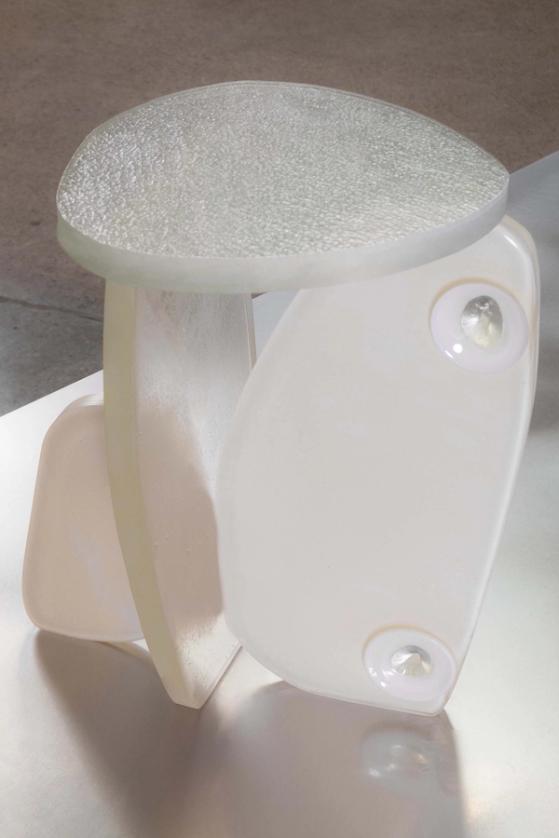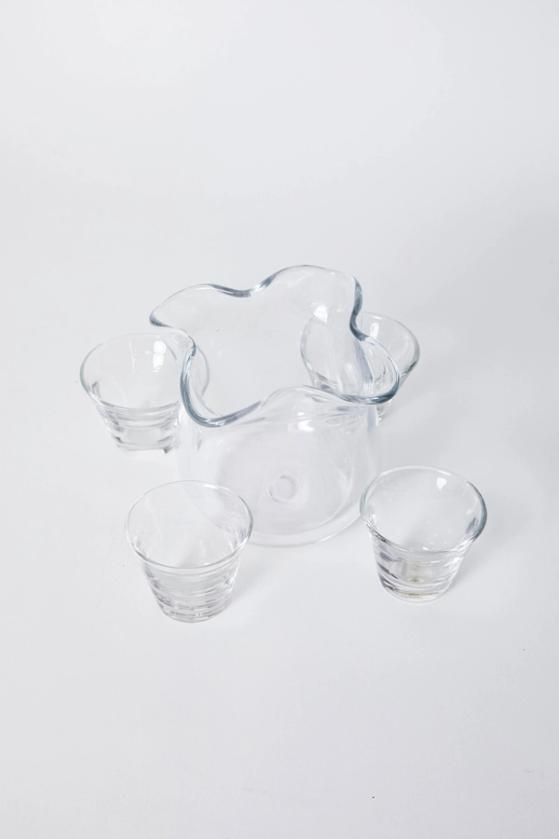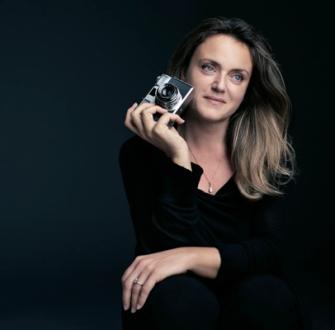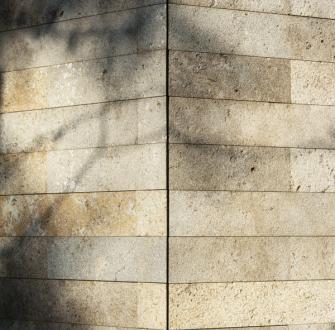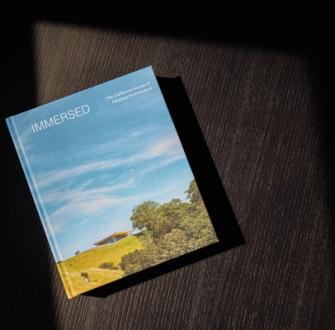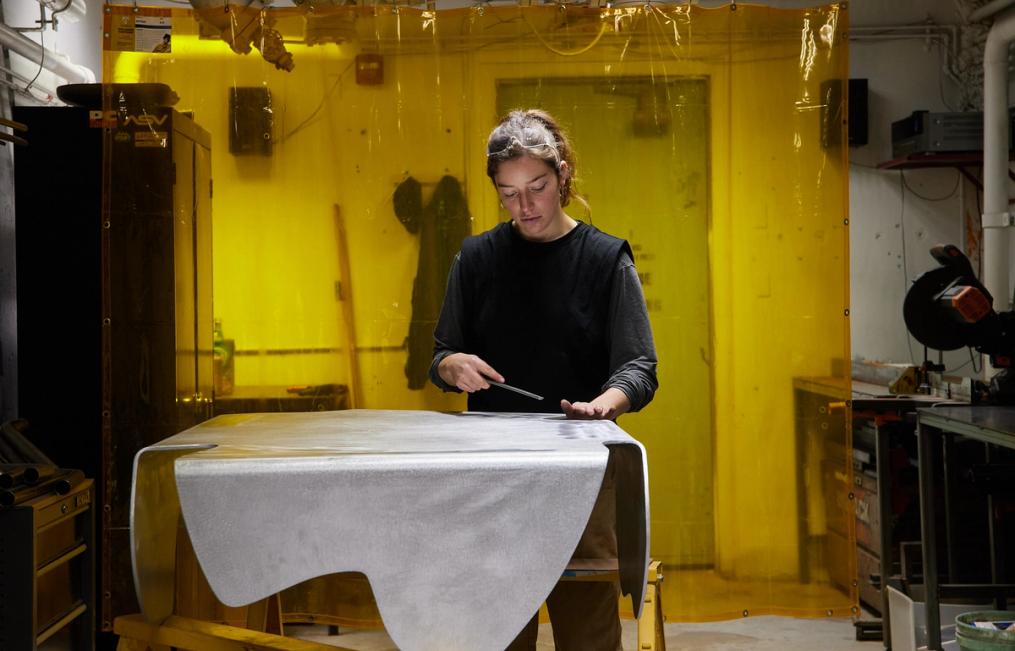
Craft: Kate Greenberg Design
Earlier this year, we had the pleasure of welcoming Kate Greenberg to our office, where she shared her journey into furniture design and the inspiration behind her amazing work. Based in Oakland, Kate is an artist and designer working across furniture, lighting, and objects. Her work has been featured in The Local Project, Surface Magazine, Dezeen, and Architectural Digest, and has been exhibited in the Bay Area, New York, and Milan. In addition to her practice, she curates Works in Progress—an ongoing exhibition series celebrating the Bay Area’s vibrant craft and design community. Kate holds a Master’s degree in Furniture from California College of the Arts.
How did you end up in the furniture crafting space and what continues to inspire you to create in this medium?
I used to be more into the adjacent fields of studio art, architecture, and architectural history. When I was 22, I had this unexplainable feeling that I needed to build things with my hands and get into construction, and took a job as a metalworker. This was my first time physically engaging with materials, solving three-dimensional puzzles, and needing to channel a sort of mind-body connection day in and day out.
This space continues to feed me limitless questions and problems. The way I set up my practice, it demands that I draw on a big range of topics and ways of thinking: formwork, human experience, aesthetics, research, writing, engineering, building techniques, materials, and presentation. I really enjoy having dynamic days, although it comes with lots of other stresses.
How did learning about traditional furniture crafting and history in school inform your work?
I spent a bit of time hiding in the CCA library, looking through DOMUS and books on Italian and Japanese design, and of course some traditional craft techniques were taught too. I think one a-ha moment was when I was researching women designers and stopped understanding furniture as an industrially designed product (how can this attend to a human want/need?) but instead as a channel for the maker to express something about our lived experience (what is the thread between your own perspective and the rest of the world’s?)
That is pretty in line with the CCA ethos too. They were like: we will quickly brief you how people have done this in the past, but how would you do it? That has led me to a plethora of made-up techniques and pushing function to weird places, instead of needing to compare myself to tried and true masters.
See more of Kate's work here, her features in The Local Project and Surface Magazine, or check out her ongoing Works in Progress exhibition.
Tell us about the studio you work in - how did you find this shop space? Is there an interesting history behind it?
My studio is one nook within a shared shop called Alameda Point Studios. A professor from CCA used to rent here, and he connected me and my classmate. We had just graduated and it was peak COVID, so being around other humans — many who are quite a bit older and were unphased by the world turning upside down — couldn’t have come at a more perfect time. We have quite different practices but as humans they are unbeatable and I’m super grateful to have landed there.
APS was started 30 years ago by Dean Santner, a woodworking legend who sadly passed away recently. Back then, he simply needed a space to build out his business and there was nothing going on on the Alameda navy base but some leftover incredible machinery. Soon after he moved in, he and two others decided to build it out as a woodworking community. They used to test the U.S. Navy jet engines during World War II in this building, so there’s unique architectural artifacts all around, like the old track system along the ceiling and gigantic bomb-proof doors.
What is one of your favorite pieces? Can you share a bit about the concept, design, and fabrication process?
It always changes but right now, I’m still thinking about Anthophilia Tennis, a ping pong table that was prompted by an exhibition in January. The concept was truly a culmination of research and world-building from these last years. I wanted to draw a parallel between two people playing this intimate, competitive game in a public park, to the way an insect navigates our environment and reacts/adapts to the structures it comes into contact with. Both are in a dance. I believe humans, animals, plants, and even inanimate objects are all going through this crazy world together, and understanding each other helps build empathy and a more considered life. My happy place is needing to build a ping pong table but spending a month researching bee’s behaviors and urban earthworks.
The challenge of this piece was balancing the concept and all the handcrafted details, with its sheer size, game-specific requirements, and necessary robustness. The fabrication process ranged from splicing veneers on a large scale, lacquer work, and hand-rolling organic steel pillars. Now I need to find the perfect home for it!
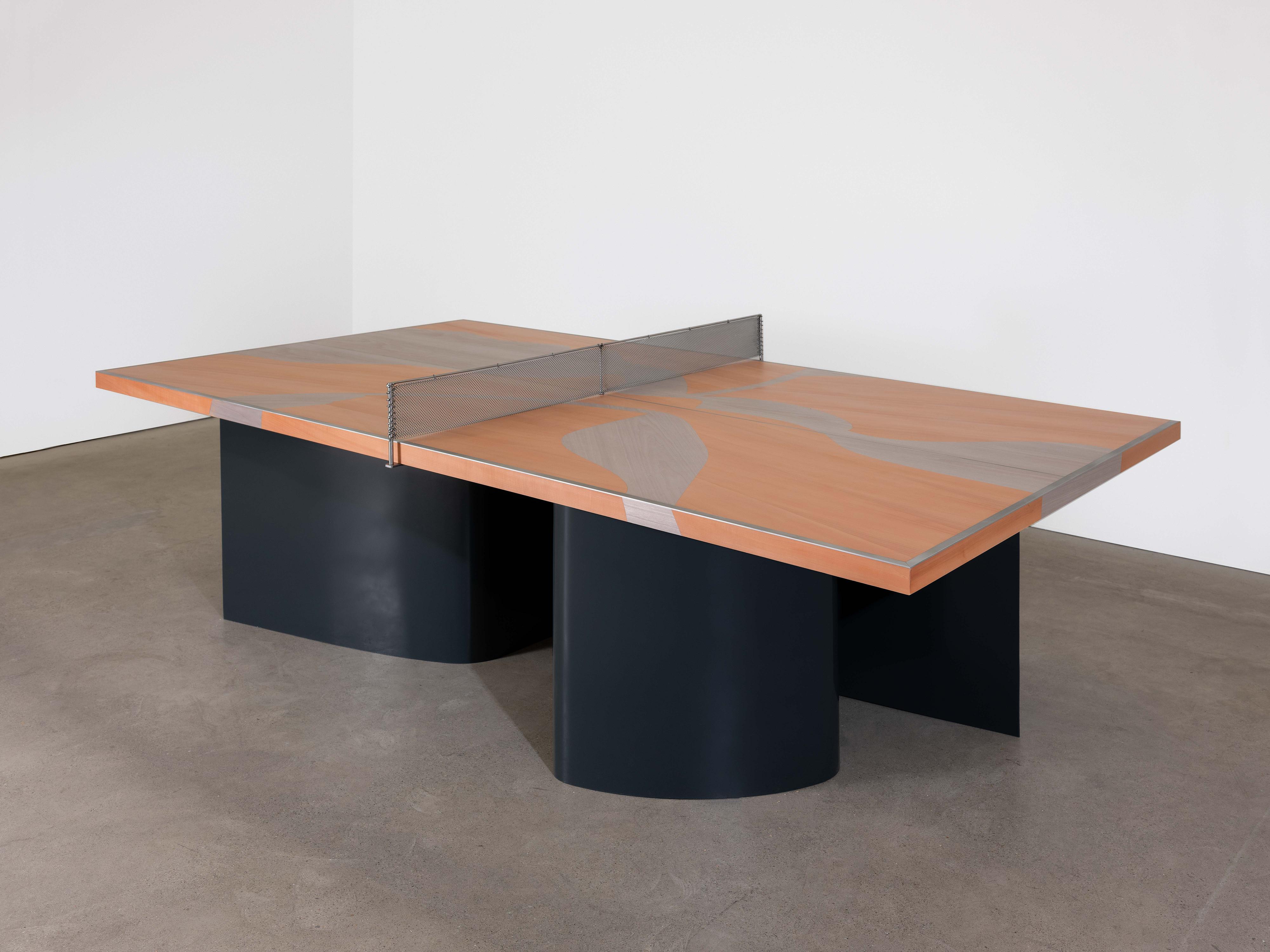
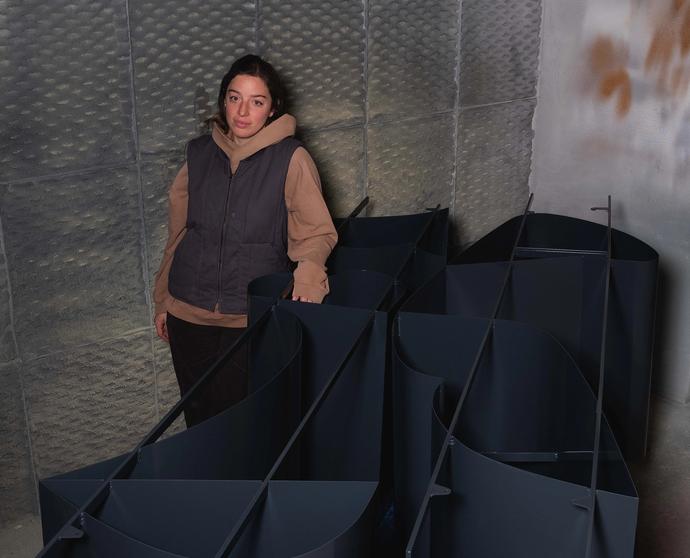
How do you define what a concept is? Can you talk about the way concept informs your process and what the different stages of your process are?
Concept is the tiny seed where it all begins and grows throughout, never tacked on later for the sake of a description. It’s the non-literal, silent focus of the work, defined by an inquiry or a study into a moment in life. I ask myself how to take this non-literal idea and embed it into a very physical thing. The concept is represented through veils and signifiers of form, color, material, and function.
It usually comes to me as a small observation that I jot down on some random day. I then expand my thoughts on that concept, through stream of conscious writing and research on related (and sometimes unrelated) topics, which then informs a visual vocabulary, the look and feel of the piece. I have hunches about which material to use, which ones will impart the feeling and energy of the concept, and usually do mini-experiments with that material that gives me more information on how to listen to it and work with it. Then I go back to the drawing board, and refine until I have somewhat of a plan. If I have a strong concept I believe in deeply and personally, around which I’ve compiled lots of writing and references, I can always find an answers to little details that still need to be worked out.
Can you tell us about the boundaries you set with technology in your craft process? Where do you embrace it and where do you keep it at a distance?
I have stayed fairly at bay with technology, for better or for worse. It’s cool to see how other makers incorporate newer processes, like rough-carving a sculpture with a 5-axis CNC, but I am an extremely stubborn person and try to use it as a tool, not as the core process itself. For instance, I jump into Rhino if I need proof of concept, shop drawings, or to work out exact mechanical details that go beyond my own ability to comprehend on paper. Or, because my metal shop can’t accommodate sheet metal machines, I’ll use laser cutting when necessary.
Some technologies I really try not to use much: rendering — if I can dream up a design and convince a client through drawing, material studies, collage, model making, then for me, those looser modes allow doors to stay open later during the making process. 3D printing maquettes — the interesting part of a design can often come out of an imperfect model or limited resource, and does not require any computer time!
Can you elaborate on the material experiments that you undertake in the studio? What does the fabrication stage look like without an engineering background?
Anytime I’m using a new material, or a familiar material in an unconventional way, I’ll get my hands on scrap and start playing. This could mean setting up casting molds to see how latex acts when pouring it in layers; burnishing aluminum with different patinas or powders; or setting up weird tests in the glass kiln. I learned a lot from an old manager at Concreteworks about how to set up experiments where you change just one variable for each test so you can learn what’s actually going on.
The “engineering” aspect comes into play when needing to figure out how one material can bond or fasten to another, while being able to support human weight and maintain structural integrity over time. I’ll run tests to confirm any cowboy theories. Once, one of my designs required a cantilevering piece of metal and glass, way past the tipping point, but I didn’t want to use any sort of bracket or triangulation. This led to a weird design moment. Shout out McMaster-Carr — the sheer amount of hardware and parts on their catalogue has allowed me to work backward in my education.
Why is your work, and that of other furniture crafters, important? Why don't we go to bigger stores and buy mass made furniture?
Craft has been around for as long as we have; humans always had to use materials from the Earth to fashion tools, build vessels, lay roofs, or create a surface to sleep on. As these things have become more thoughtful and beautiful over time, craft really encompasses one of the more beautiful human marks on the world. Its continuation feels more important than ever.
One reason that stands out to me is the emotional impact and connection. No one ever had their breath taken away by an IKEA shelf, or watched the patina develop on an Amazon coffee table, infused with memories for generations. Craft bears the marks of consideration and care, of a human’s life as they work on a piece day to day, when a material becomes an extension of themselves. That process has given the craftsperson reverence for the Earth, and happiness and pride in their life. It literally creates a bridge between the humans who made the object and those who get to experience it from then on, like a link from the past to the future. The end piece carries a very personal meaning, one that cannot be handed over via a big industrial process. A sustainable world is one with objects that last for decades and need not be replaced, only repaired and passed down. For me, crafted objects are not nice-to-have things, they are necessary to give color and meaning to life.
